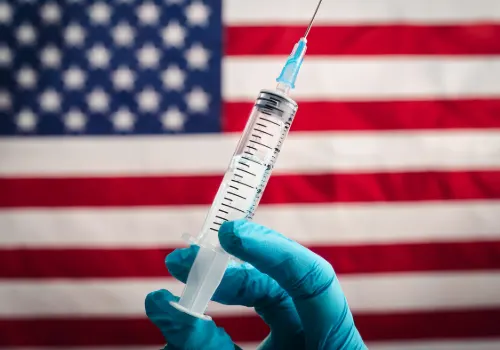
In 2025, major changes were made to how the U.S. handles COVID vaccine recommendations. Both the FDA and the CDC have shifted away from a blanket approach for boosters to more targeted guidelines focused on high-risk groups. Below is what’s new, who’s impacted, and what to do next.
What Has Changed
- The CDC removed COVID-19 vaccines from its standard immunization schedule for healthy children and pregnant women. These populations are no longer universally recommended to receive the vaccine.
- Instead of a universal recommendation for boosters, the policy now relies on shared clinical decision-making, meaning you should consult your healthcare provider to assess your individual risk.
- The FDA approved the 2025-2026 COVID vaccine formulation (monovalent JN.1-lineage) for fall use. However, access is streamlined for seniors (age 65+), people with underlying conditions, or those at high-risk.
Who Is Still Eligible (Without a Prescription)
Based on the newest guidance:
- Adults aged 65 or older
- Individuals with high-risk medical conditions (e.g., diabetes, heart disease, chronic lung disease, immunocompromised)
- Children or younger adults with chronic illnesses or underlying health conditions may also qualify through shared decision making.
What “Shared Clinical Decision-Making” Means
Instead of a one-size-fits-all mandate, this approach means:
- Talk to your primary care provider about your health status and risks.
- Discuss whether getting a booster makes sense for you based on age, health history, and current risks (variant, exposure).
- Be aware that insurance coverage may depend on whether you meet the high-risk criteria or your provider documents your eligibility.
Why These Changes Were Made
- COVID-19 hospitalizations and deaths have decreased overall, especially among vaccinated populations.
- Data shows that in low-risk individuals without underlying medical conditions, the benefit from frequent boosters may be limited, while risks (however small) and cost may outweigh those benefits.
- The FDA’s 2025 vaccine formula is designed to better match currently circulating variants.
What You Should Do Now
- If you're over 65 or have a condition that puts you at higher risk, consider getting the updated vaccine this fall.
- Review your medical history with your provider to see if you meet the high-risk criteria.
- Even if you are not in a high-risk group, being aware of COVID levels in your area and taking other precautions (masking, staying up to date on flu/respiratory vaccines) can help.
- Make sure your routine vaccines are up to date (flu, pneumonia, etc.), especially entering winter when respiratory illnesses tend to rise.
FAQ: COVID Vaccine Policy 2025
Q: Can healthy adults under 65 still get the COVID booster?
Yes, but under the new framework you’ll need to discuss the pros and cons with your healthcare provider. It’s no longer a universal recommendation.
Q: What about pregnant women or healthy children?
CDC has removed the universal recommendation for these groups. Vaccination may still be considered via shared decision-making depending on individual risk.
Q: Will my insurance cover the vaccine if I qualify?
Most likely yes for those who are eligible (65+, high-risk). Insurance coverage may depend on whether the provider documents the high-risk condition.
Q: Is the vaccine formula different now?
Yes. The 2025-2026 COVID vaccine is based on the monovalent JN.1 lineage to better match current virus variants.
The Bottom Line
The U.S. has moved towards a more targeted COVID vaccine policy. Rather than recommending a booster for everyone, the focus is now on individuals who are older or have underlying health conditions. If you don’t fall into those groups, it doesn’t mean you can’t get vaccinated—but the decision should be made with your doctor.
Want help figuring out if you qualify under the new guidelines?
Request an appointment & talk to your provider


.webp)

